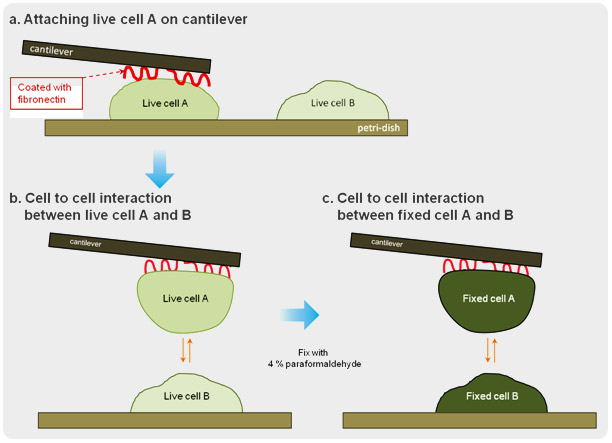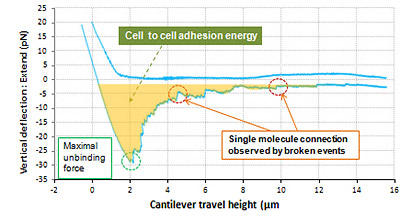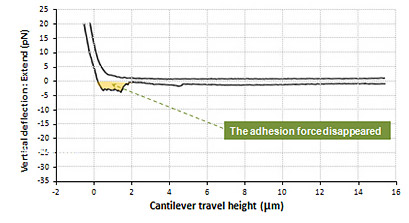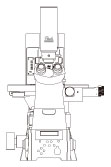Brian Choi, Bio-application scientist
For more information, please contact app@parksystems.com
Sample courtesy: Prof. Tong-mook Kang, Sungkyunkwan Univ)
Cells communicate with each other, forming single or multiple interactions to various protrusive molecules and cell junctions. The cell to cell interactions play a crucial role in the development and function of multicellular organisms. With the use of force distance spectroscopy of atomic force microscopy (AFM), the strength of this interaction at the level of individual molecules can be measured under physiological conditions. In this study, one cell attached on a tipless cantilever was brought to the other cell where physical contact between the two was made and force distance spectroscopy was performed.
- Study the cell to cell interaction at the level of individual molecules by detecting the adhesion force with the force distance spectroscopy of AFM.
- Adhesion force of live cell membrane molecules is detectable at sub-nanonewton range and distinctively comparable with inactive molecule.
Steps for Cell to Cell Interactive Adhesion Force Detection


Cell to Cell Interactive Adhesion Force : Live cell vs. Fixed cell
 Live cell to cell Adhesion Force
Live cell to cell Adhesion Force
 Fixed cell to cell Adhesion Force
Fixed cell to cell Adhesion Force
Shown above is the interaction between live cell and fixed cell. It was detected that the interaction of live cells generated a certain amount of adhesion energy (colored with orange). The maximum unbinding force of interactive molecules is approximately 27 pN. And many single molecule broken events are detected at the force range of a few piconewton. On the contrary, such cell to cell interactive adhesion force disappeared in the result measured in fixed cells.
Park Cell Analysis Systems

|

|

|
|
| Park NX12-Bio | Park NX10 | Park XE7 | |
| Scanning Ion Conductance Microscopy (SICM) | |||
| Atomic Force Microscopy (AFM) with liquid probe hand | |||
| Inverted Optical Microscopy (IOM) | |||
| Live Cell Chamber |

